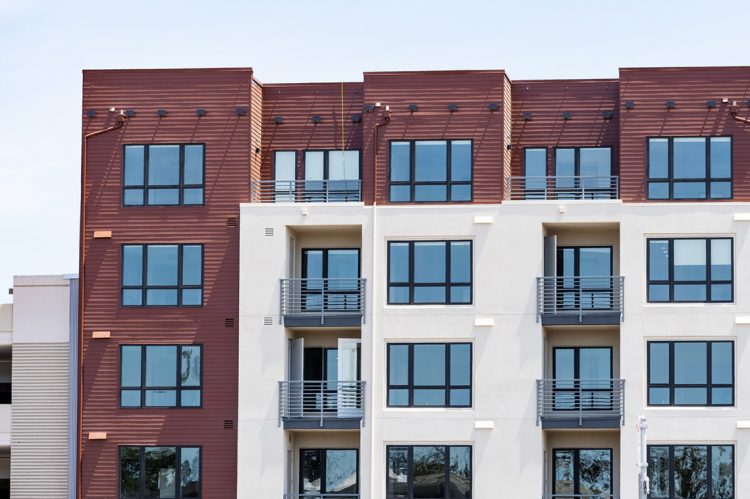Multifamily rents were flat in February, unchanged from January and December, as asking rates averaged $1,702, according to a new report from Yardi Matrix.
Yardi Matrix’s National Multifamily Report for February found that year-over-year rent growth continued its downward slide, and is now 4.8% nationally, down 70 basis points from the previous month and the lowest level in nearly two years. The national occupancy rate remained at 95.2%, which is 100 basis points off its late-2021 peak.
As for the single-family rental market, the average asking rent was also flat at $2,071. The YoY increase fell by 80 basis points to 3.4%, far below the 14.8% growth rate a year ago. Single-family occupancy rates fell 10 basis points in December to 95.7%, down 1.3 percentage points from the same month a year ago.
Key highlights:
- Asking rent growth remains positive YoY in almost every metro, but 23 of Matrix’s top 30 metros recorded negative growth over the last three months and 17 were negative. Las Vegas (-1.6%) and Phoenix (-1.2%) saw negative rent growth over the past year, while Austin (2.0%), Atlanta (2.2%) and Sacramento (2.3%) are barely above water.
- The Midwest claims three of the top five spots in the Matrix top 30 metro list for year-over-year rent growth: Indianapolis (9.0%), Kansas City (7.9%) and Chicago (6.3%).
- Indianapolis is extremely affordable, with the average asking rent of $1,210 nearly 30% below the national average. Recent job creation is below the national average, but is up from pre-pandemic levels. Indianapolis’ economy is diversifying, with growth concentrated in logistics, construction, manufacturing and biotechnology/pharma.
- Rents declined month-over-month (-0.2%) in the luxury Lifestyle segment and rose 0.2% in the Renter-by-Necessity segment, suggesting affordability is impacting demand.
- In the Matrix top 30 metros, Lifestyle segment losers outnumbered gainers by nearly 5:1, as 24 metros saw monthly decreases in asking rents while only five recorded increases. The story was different in RBN, where metros with monthly gains (19) far outnumbered those with declines (7).
- Renewal rent growth nationally fell to 8.8% year-over-year through December, a 130-basis-point drop from November. December marks the lowest rate of renewal rent growth since early 2022, but the rate remains high by historical standards and will soon decelerate in the manner of asking rents.
- National lease renewal rates fell to 64% in December, down from 65.6% in November. Renewal rates are low in metros with high rent costs, such as Los Angeles (43.3%), San Francisco (46.5%) and San Jose (46.5%), where renters are more transient and are shopping for better deals.
Major takeaway:
“February’s higher-than-expected inflation data dashed hopes that costs were on track to retreat quickly while the job market and economic growth remain strong. The multifamily market must prepare to operate in a higher rate environment in 2023 and likely into 2024,” said the author of the report.
“Despite ongoing investor demand, transaction activity dropped sharply in the first quarter due to the pricing uncertainty. Many sellers don’t want to transact while prices are down. If rates continue to rise, property values will take longer to recover. What’s more, the longer rates stay high, the more distress will become a factor,” continued the author. “Properties that have maturing low rate mortgages originated before 2022 will see lower proceeds when refinancing at current higher rates. Adding to the stress is an increase in expenses such as insurance and taxes. Already, owners are starting to hand back keys to lenders, and the problem will grow if rates go higher and/or property performance slips due to a weakening economy.”
The author concluded that “Multifamily owners must focus on operating more efficiently, while investors looking to deploy capital will find opportunities arising from distress.”
For the full report, click here.












